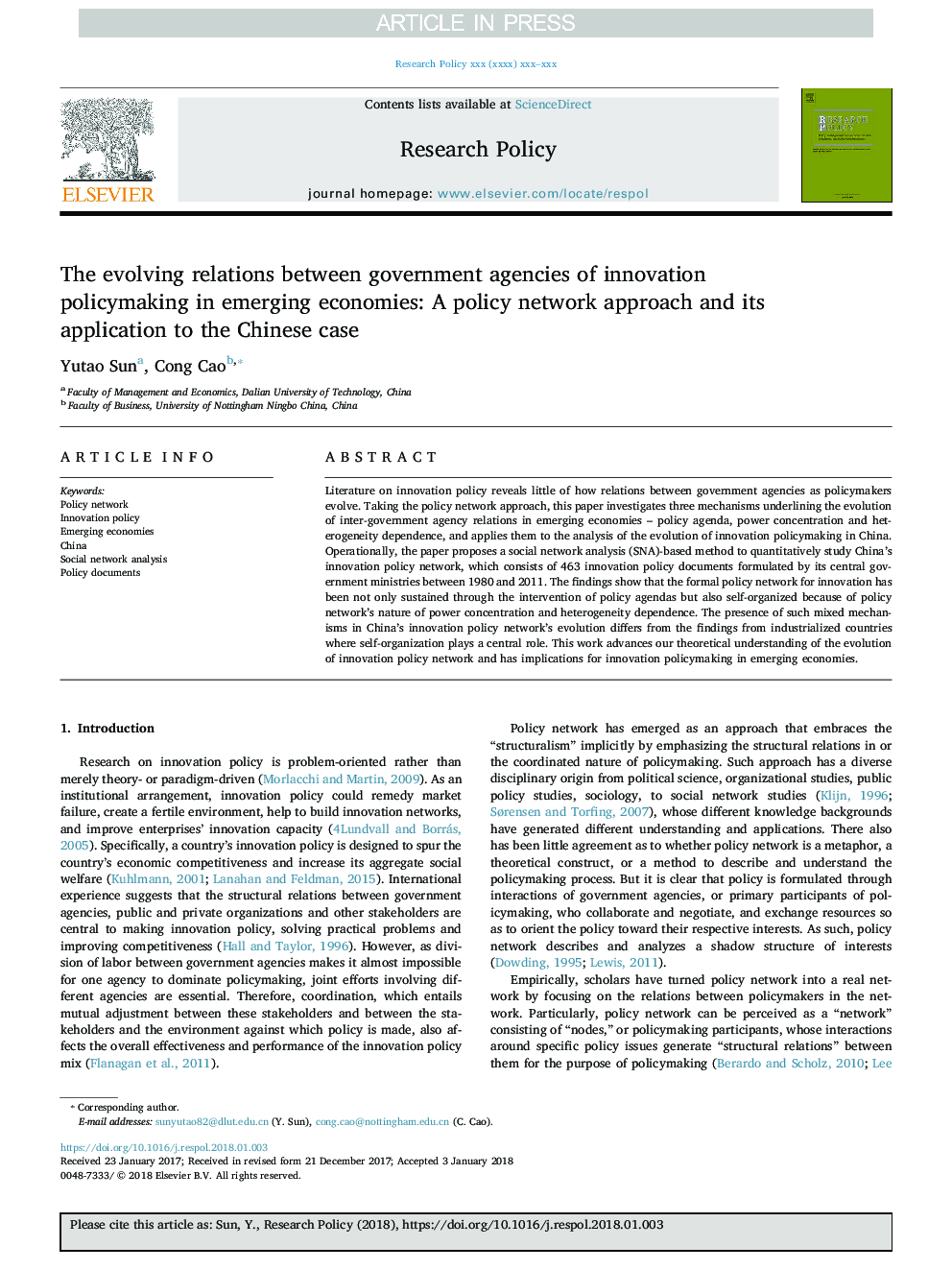| Article ID | Journal | Published Year | Pages | File Type |
|---|---|---|---|---|
| 7384495 | Research Policy | 2018 | 14 Pages |
Abstract
Literature on innovation policy reveals little of how relations between government agencies as policymakers evolve. Taking the policy network approach, this paper investigates three mechanisms underlining the evolution of inter-government agency relations in emerging economies - policy agenda, power concentration and heterogeneity dependence, and applies them to the analysis of the evolution of innovation policymaking in China. Operationally, the paper proposes a social network analysis (SNA)-based method to quantitatively study China's innovation policy network, which consists of 463 innovation policy documents formulated by its central government ministries between 1980 and 2011. The findings show that the formal policy network for innovation has been not only sustained through the intervention of policy agendas but also self-organized because of policy network's nature of power concentration and heterogeneity dependence. The presence of such mixed mechanisms in China's innovation policy network's evolution differs from the findings from industrialized countries where self-organization plays a central role. This work advances our theoretical understanding of the evolution of innovation policy network and has implications for innovation policymaking in emerging economies.
Related Topics
Social Sciences and Humanities
Business, Management and Accounting
Business and International Management
Authors
Yutao Sun, Cong Cao,
